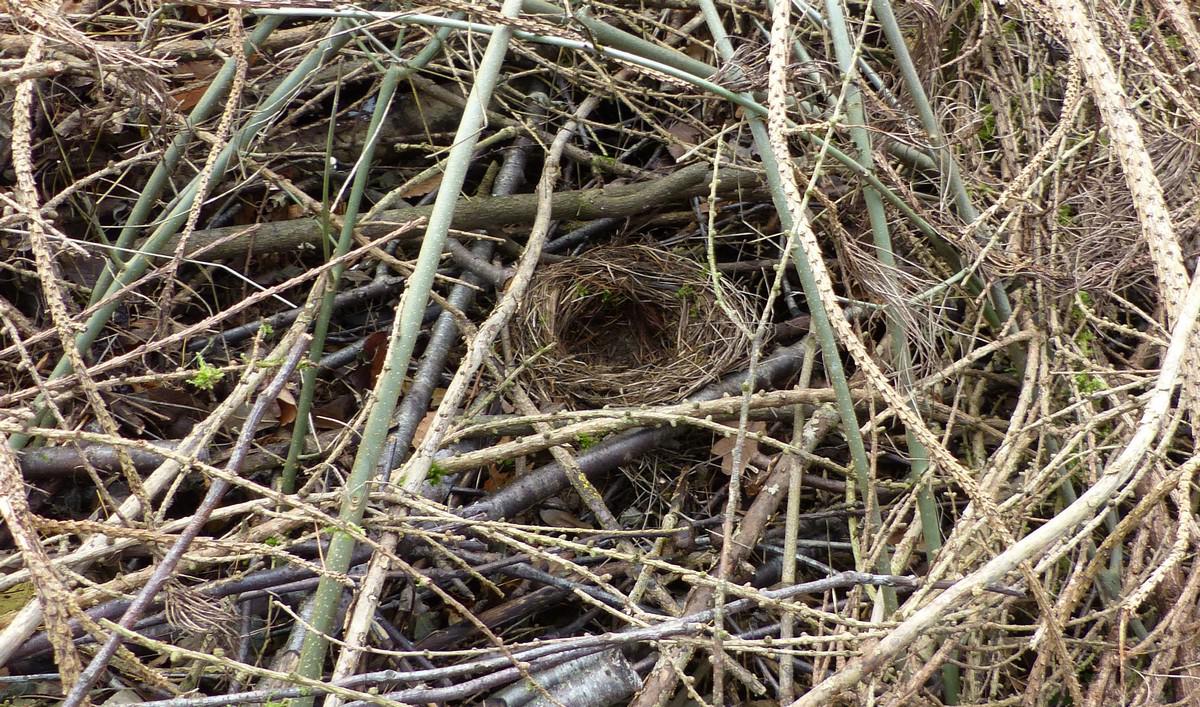Developing ecosystem
Karl Gunter
We've been busy working in the woods - here are some things we discovered in late winter.
The brash mounds in the woods are doing what we hoped they would do – becoming habitats and shelters... mini ecosystems.
Being both sturdy and loosely woven, the mounds are accessible by many creatures. Ground beetles are finding the lower layers where we lay the larger pieces of wood and insects are inhabiting the upper layers which are made up of lighter materials. Because birds and small mammals can also get in there, they are finding these insects too, which means that the mounds are acting like larders. In a way, they are dead hedges within the woodland and are utilised in much the same way as live hedges – the birds flit from one to another, using them as protective cover as they make their way through the trees. As we walk through the wood, we see them all around us, flying in and out of the woven brash or perching atop to sing their territory songs.
Birds have started to nest in the brash – the fields in the area are large and there isn't a lot of hedgerow, so it's a welcome sign that they are finding the shelter and relative safety of the brash to make nests in.
In the building of new mounds, we are now combining older ones. We've found this to be good use of materials and space – the wood is but 12 acres and there are only so many smaller mounds that easily fit into it. The place was getting pretty crowded. The new tactic is to build long – circles, spirals and mounds that curve in serpentine fashion through the trees, creating considerable lengths of wind break and shelter.
Where old mounds are taken apart, we see the development of fungi – many species are springing up. Some are surprisingly beautiful, like the tiny, delicate pink mushroom (Mycena adonis) and the rich purple velvet of this crust fungus (Terana caerulea) growing on dead wood within a mound. Through it all run threads of fungal mycelium, the building blocks of a healthy ecosystems and a pleasure to see in this developing community of species.
The importance of mycelium with Paul Stamets






